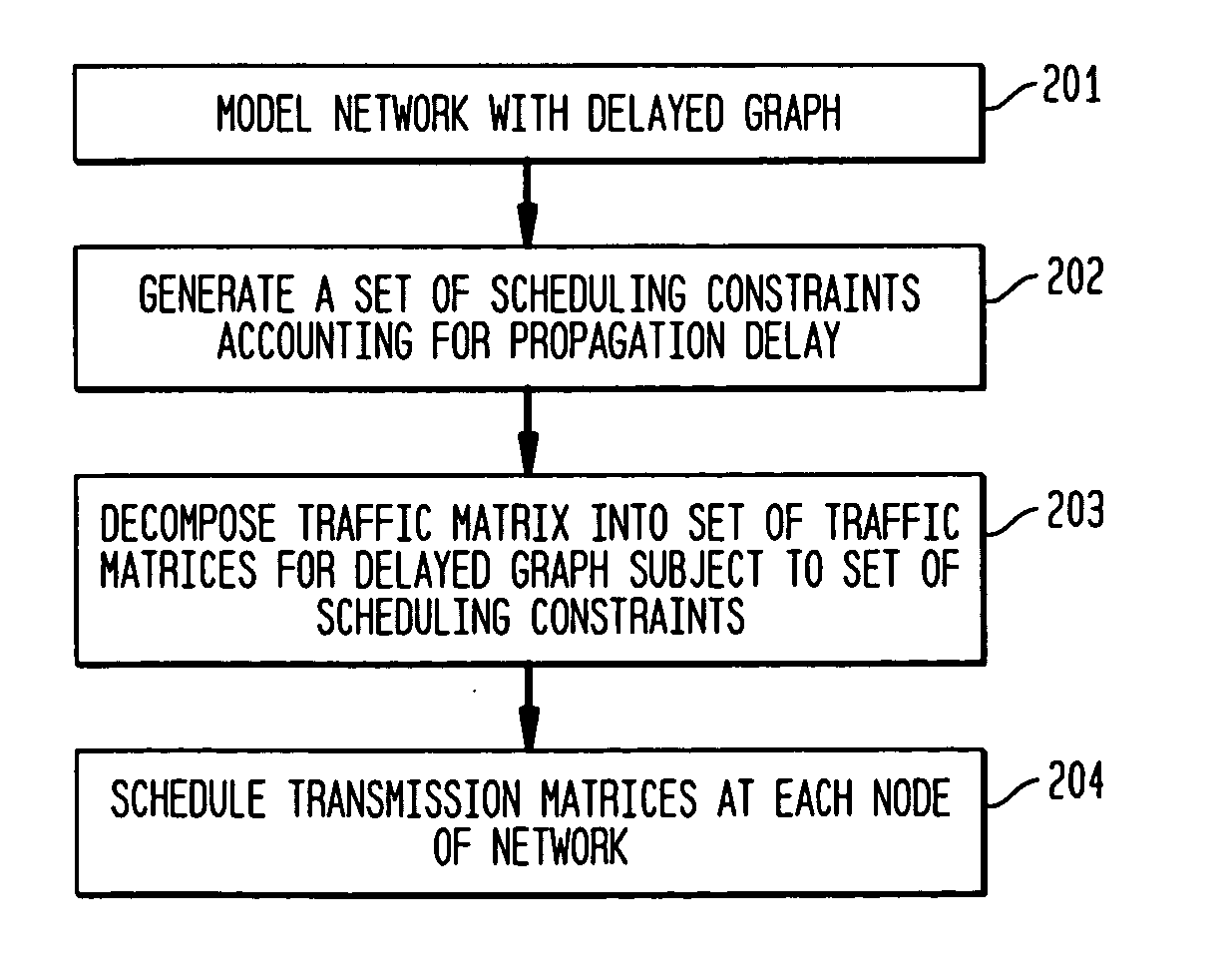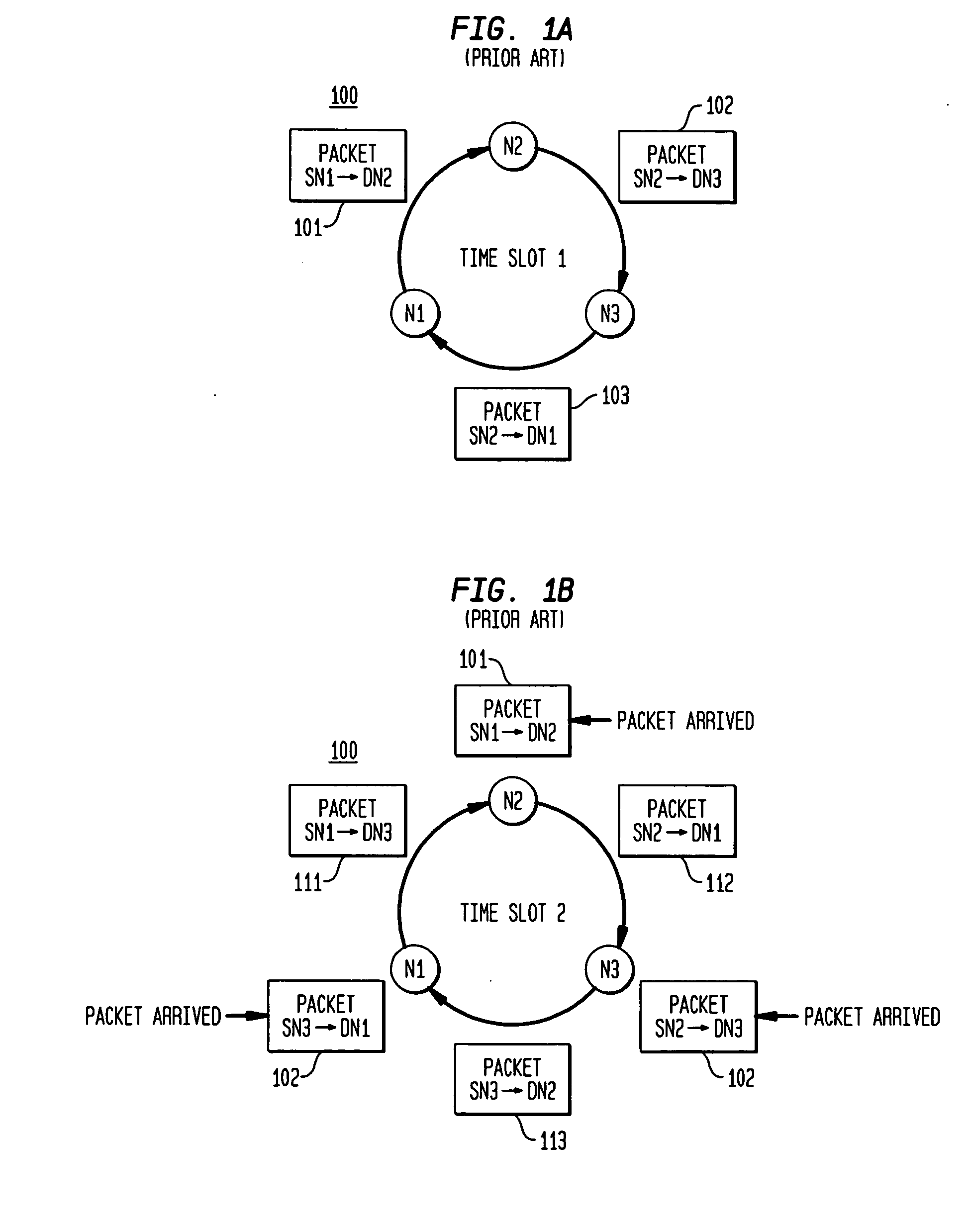Scheduling with delayed graphs for communication networks
a communication network and graph technology, applied in the field of data transfer scheduling, can solve the problems of inefficient resource utilization, high equipment cost of network cost, and high cost of network cost of grooming devices
- Summary
- Abstract
- Description
- Claims
- Application Information
AI Technical Summary
Problems solved by technology
Method used
Image
Examples
Embodiment Construction
[0033]FIG. 2 shows an exemplary method 200 of generating a network schedule accounting for propagation delay in accordance with the present invention. Exemplary method 200 might be employed in a scheduler of a node in a communications network. The communications network might be a packet- or burst-switched transport network, and the communications network might be either i) a network of electronic switches / routers or ii) optical switches that are connected either with wired or optical links. The communications network as described herein is configured as a ring network, although the present invention may be extended to other types of network configurations that may be modeled with a ring network accounting for delays in accordance with an exemplary embodiment of the present invention.
[0034] At step 201, the network is modeled with a delayed graph, and the network has a corresponding rate matrix that characterizing traffic demands through the network. At step 202, a set of schedulin...
PUM
 Login to View More
Login to View More Abstract
Description
Claims
Application Information
 Login to View More
Login to View More - R&D
- Intellectual Property
- Life Sciences
- Materials
- Tech Scout
- Unparalleled Data Quality
- Higher Quality Content
- 60% Fewer Hallucinations
Browse by: Latest US Patents, China's latest patents, Technical Efficacy Thesaurus, Application Domain, Technology Topic, Popular Technical Reports.
© 2025 PatSnap. All rights reserved.Legal|Privacy policy|Modern Slavery Act Transparency Statement|Sitemap|About US| Contact US: help@patsnap.com



